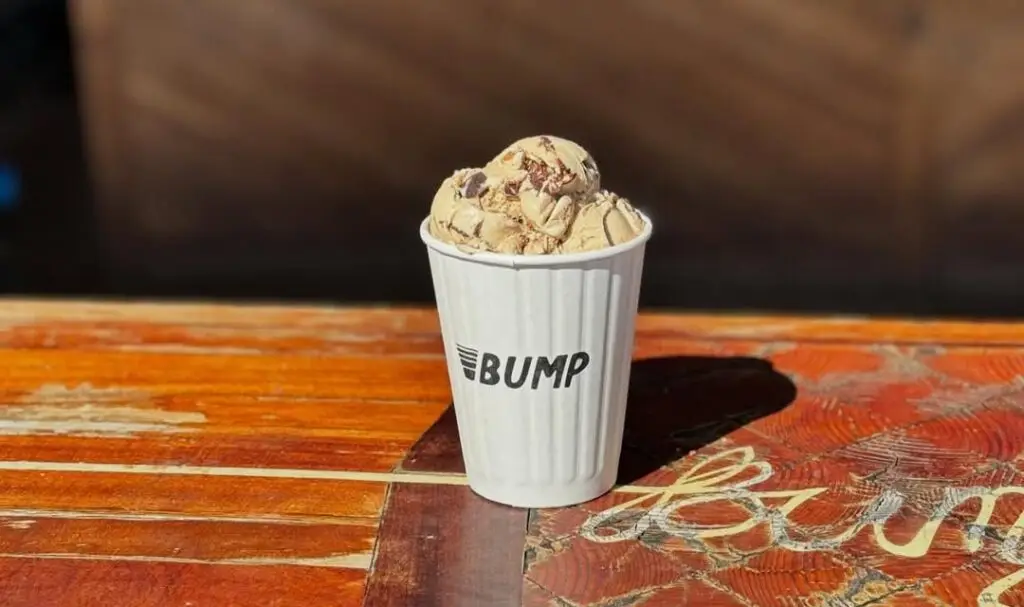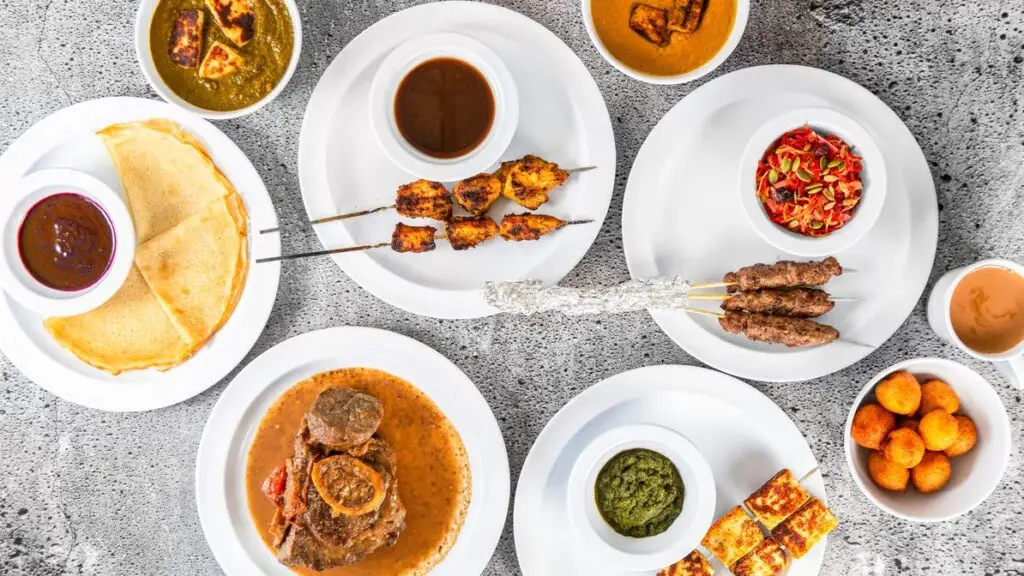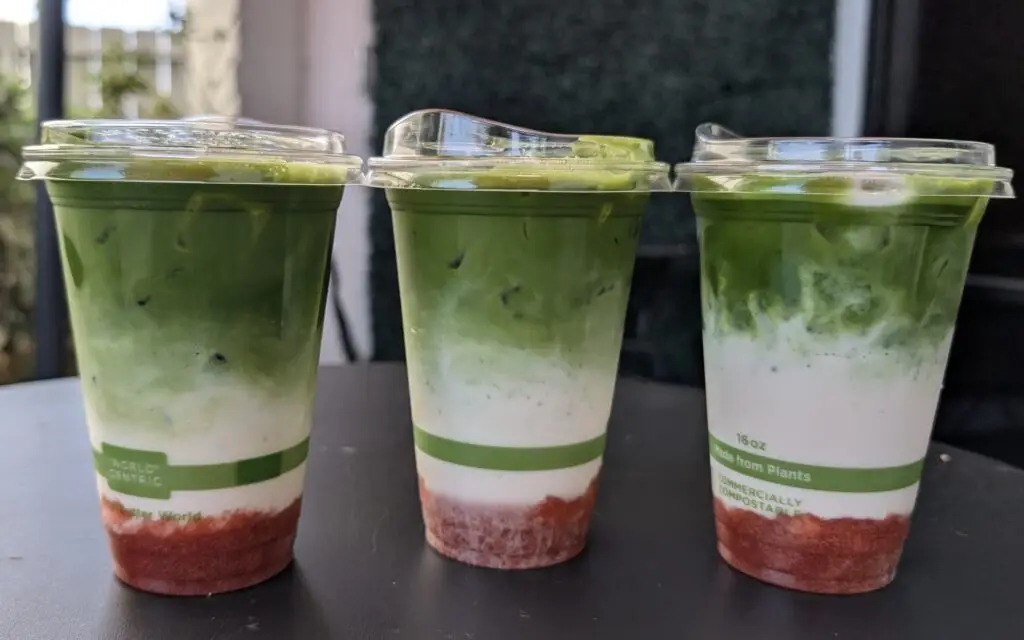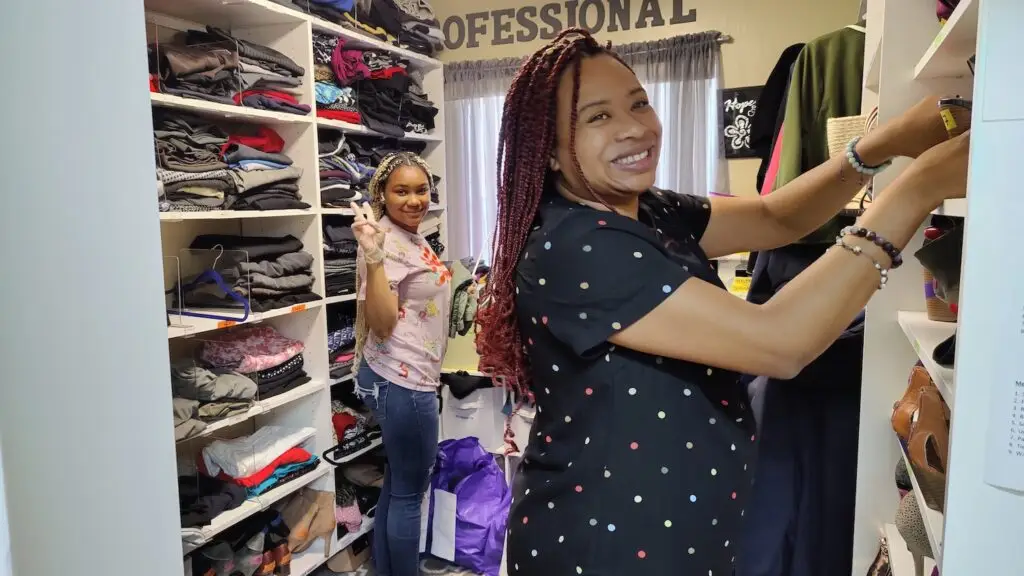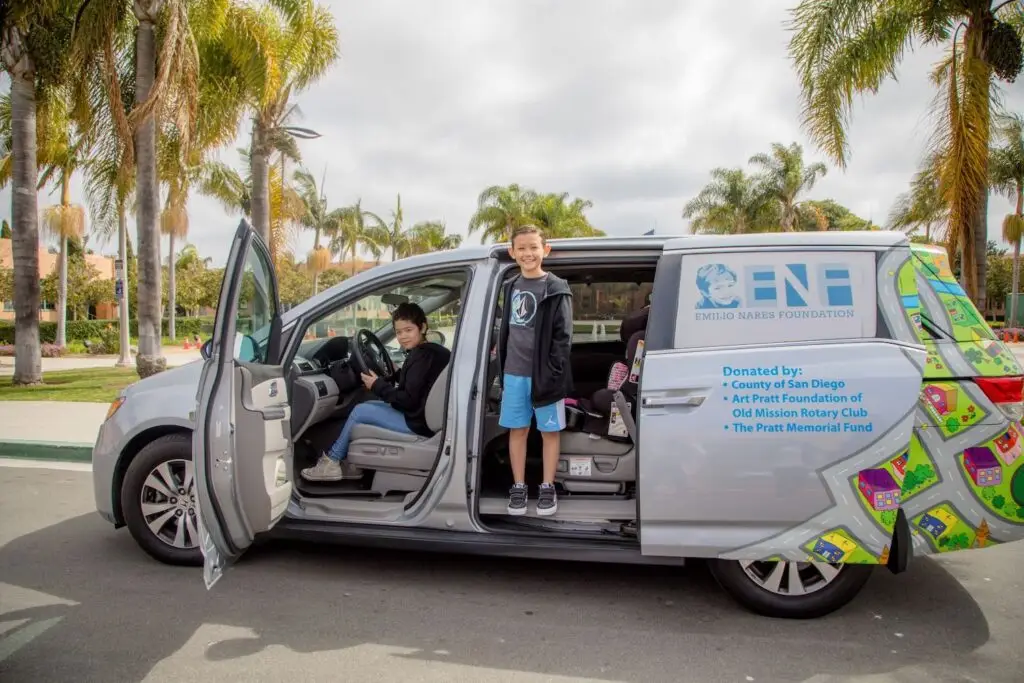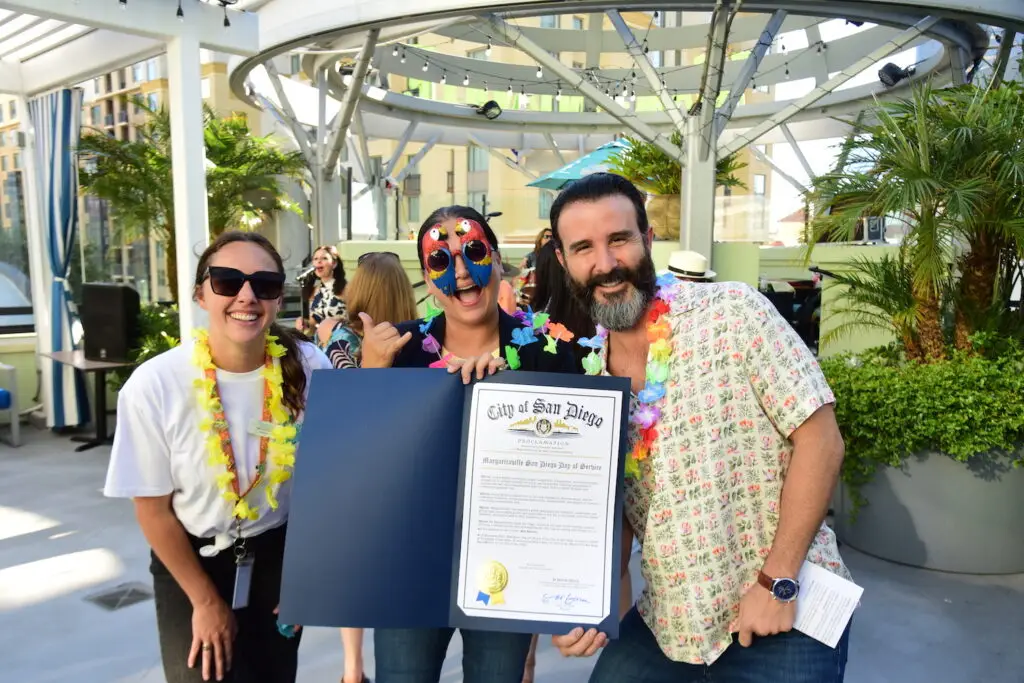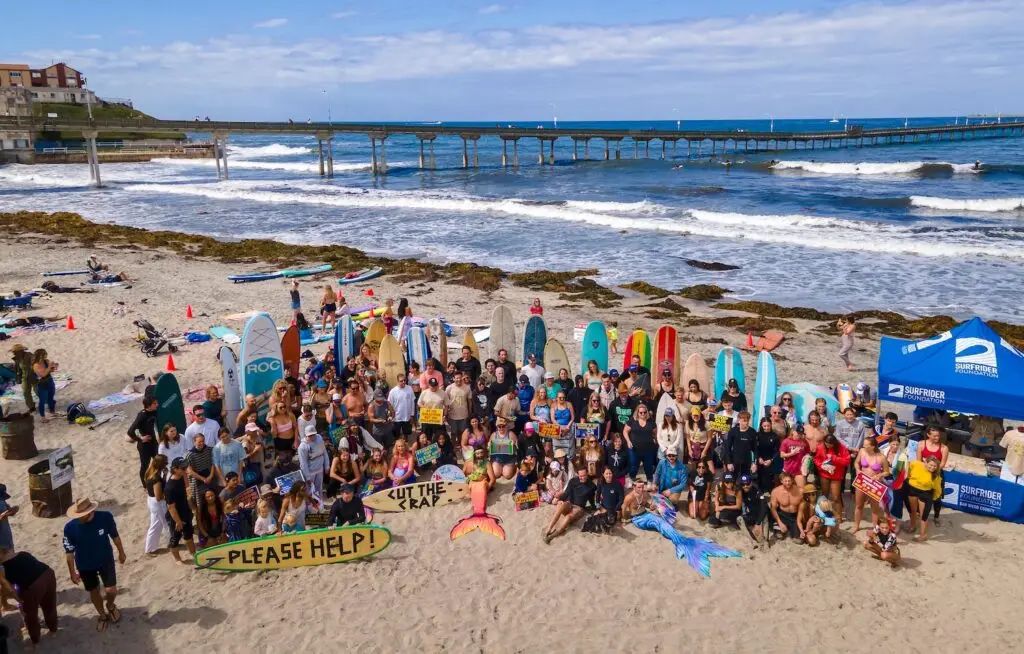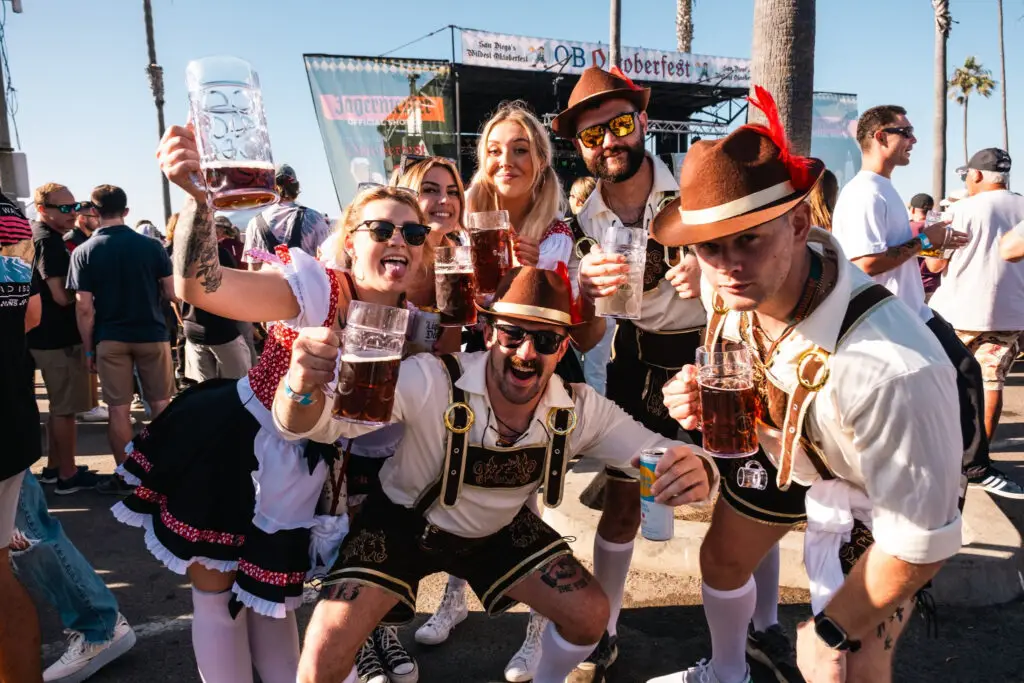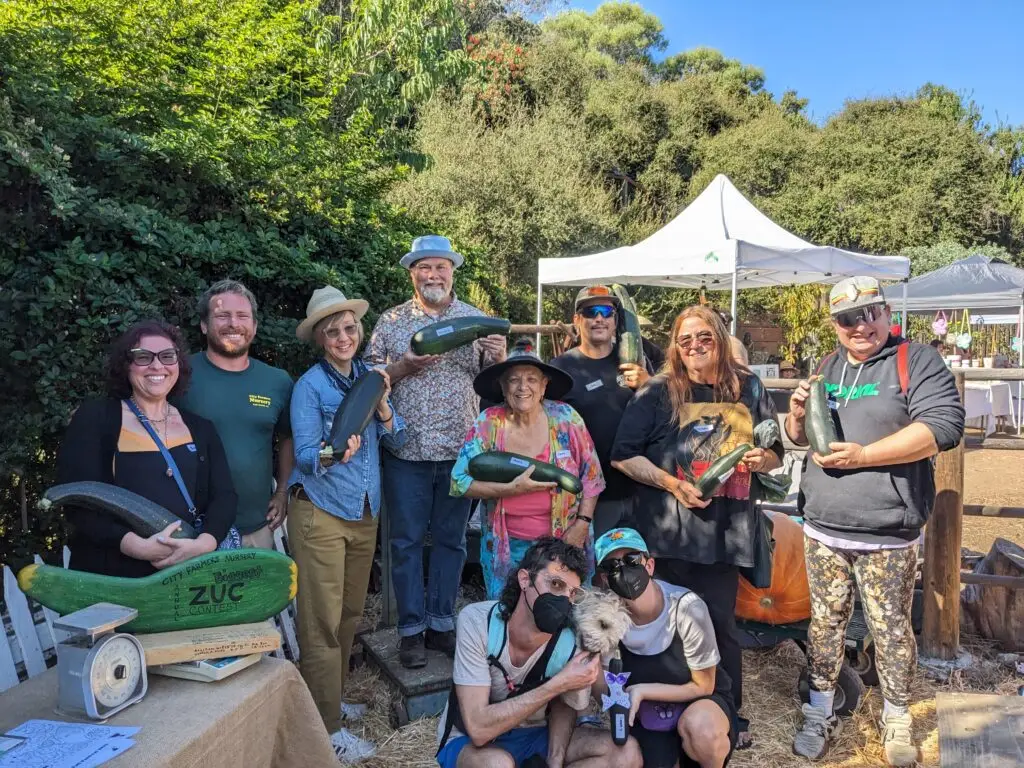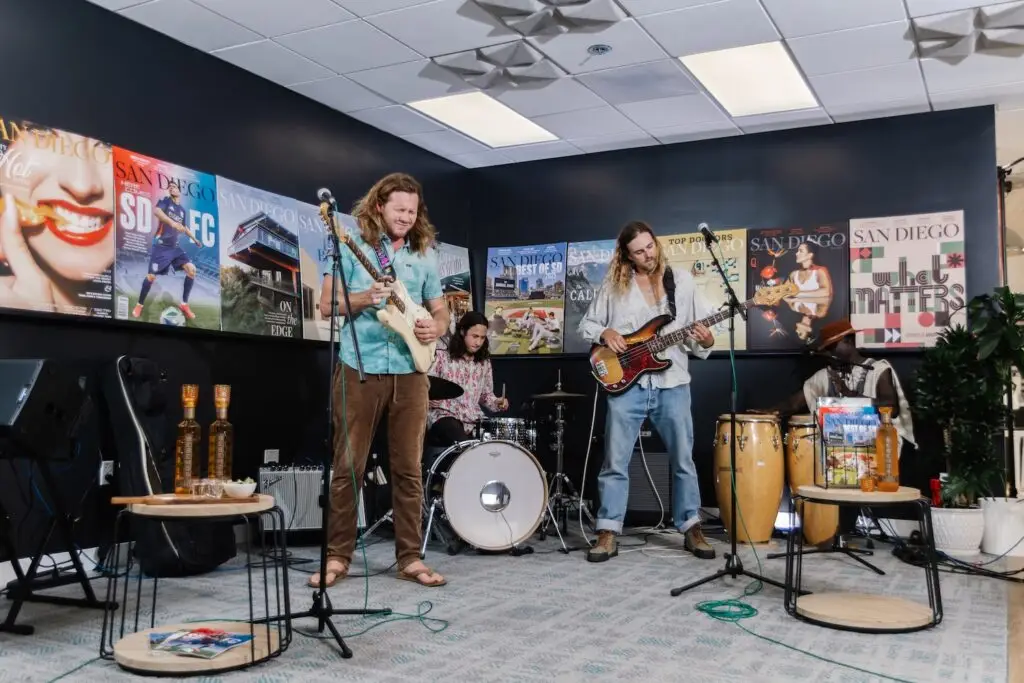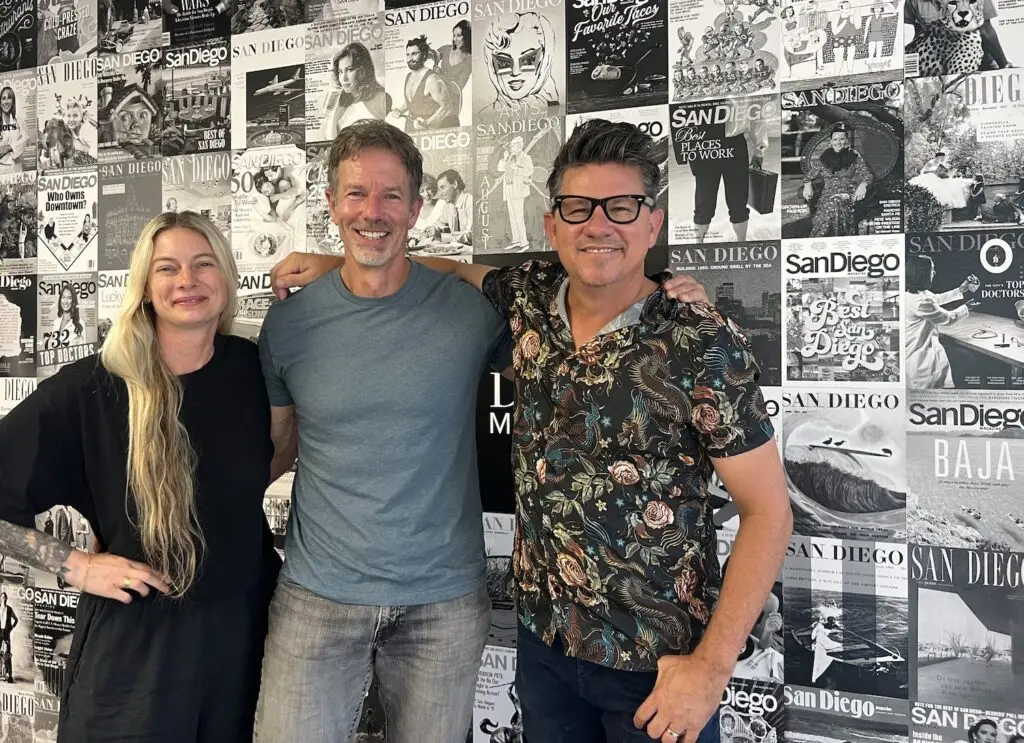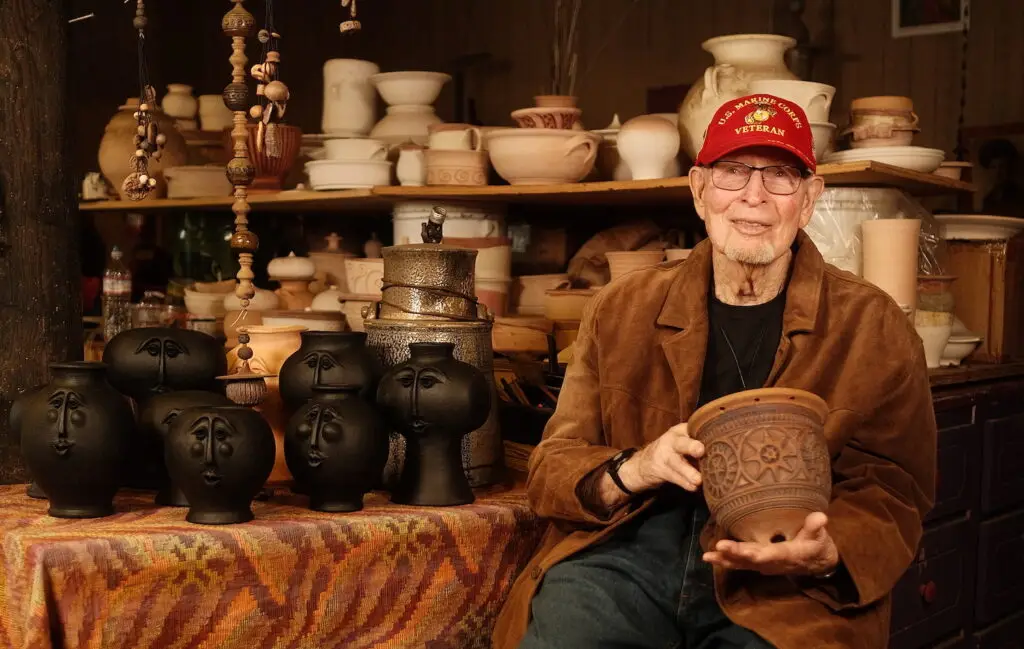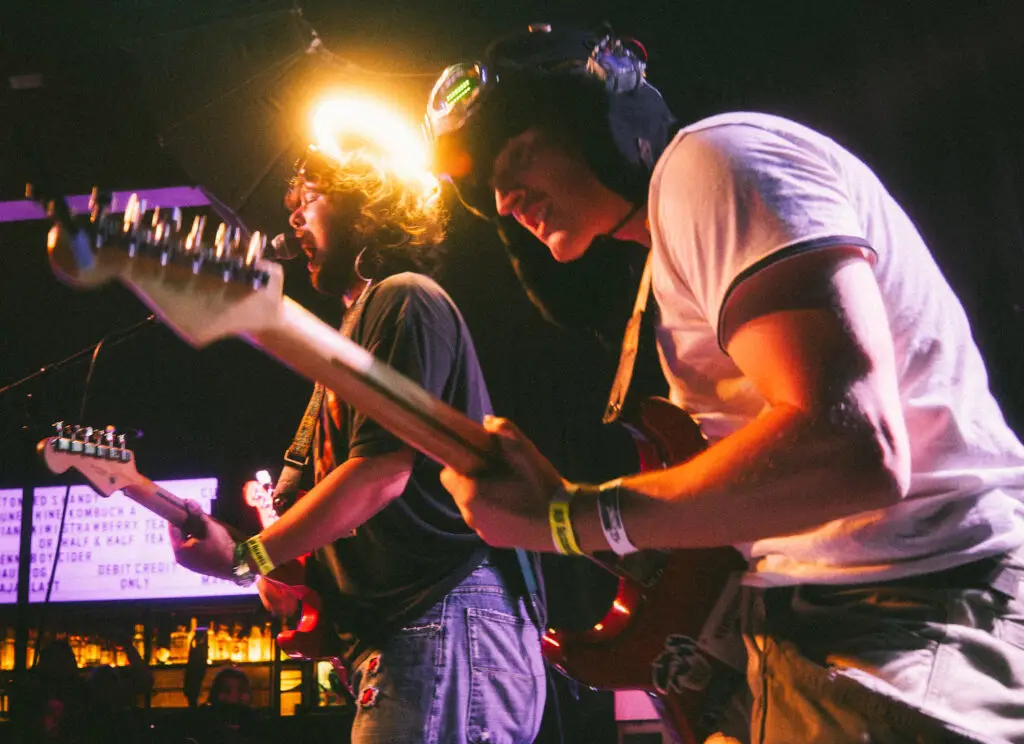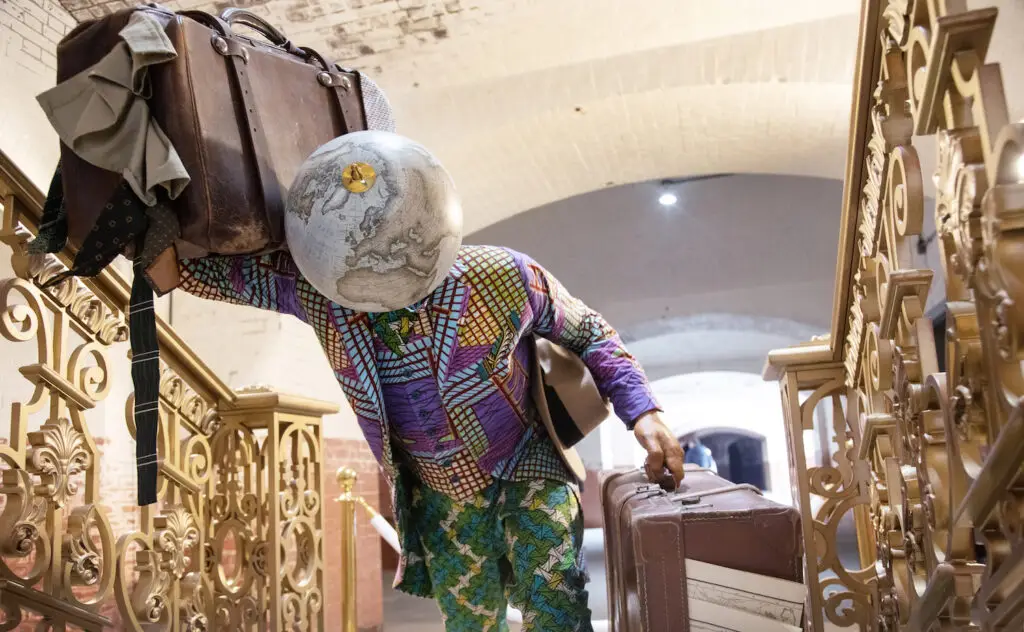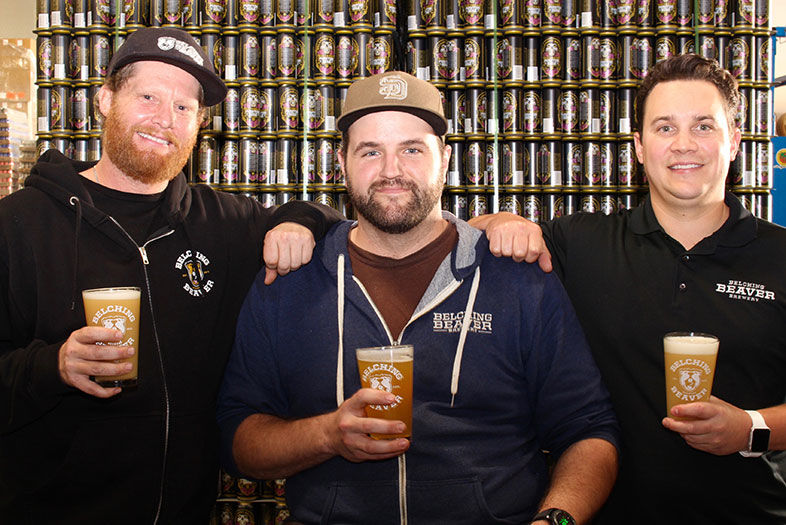Since the company poured its first beer in 2012, Belching Beaver has made quite a name for itself. The name itself has brought notoriety, but so has the breadth and depth of the beer produced. The brewery’s flagship beer has traditionally been its peanut butter milk stout, but a team of talented brewers has expanded the BB repertoire to include, among other things, excellent sours, barrel-aged beers, and some truly delicious IPAs.
With five locations in San Diego (Oceanside, Ocean Beach, North Park, and two in Vista) and a big presence in major retail chains, Belching Beaver has become one of the most recognizable brands in town. If you ask owner-founder Thomas Vogel, he’ll say a lot of that brand recognition comes from cultivating fans at the brewery’s outposts and tasting spaces, which are placed in strategic locations around the county. With that bold approach, Belching Beaver has managed to build a strong and loyal customer base—economic support that has enabled the company to grow and expand at a very impressive rate.
I assembled three of Belching Beaver’s main brew team members at the Oceanside production facility and sat them down for a chat about the company’s approach to beer and what’s at the core of Belching Beaver’s notable success. Sipping on a cold pint of delicious Phantom Bride IPA, I sat and listened as Brewmaster Troy Smith, Barrel Master Peter Perrecone, and Head Brewer Thomas Peterson explained why their brewery has become such a San Diego success story.
Let’s start with the basic background-where did each of you come from before Belching Beaver and how did you get into brewing?
Troy: I started my beer career at Coronado Brewing, I guess I would say; the co-owner and president, Rick Chapman, is my step-dad. I went to school in Chico, California, home of Sierra Nevada, and I worked for a small brewery called Butte Creek Brewing Company. Rick knew a friend of a friend and got me in there on the bottling line. We also used to contract brew for a company called Bison Brewing Company. I kind of started like the “brewery bitch” up there-I would have to jump inside the tanks to clean them (and we were using powdered caustic back then!) and clean all sorts of other stuff. So I started there while I was going to school for construction management. My biological dad is a general contractor, he’s been in the construction industry his entire life. He basically begged me not to go into construction, particularly because it goes up and down with the economy so much-it’s good when it’s good, but it’s bad when it’s bad. That’s the good thing about alcohol: You drink when it’s good and you drink when it’s bad. So I came home from a summer, and worked for Clint Stromberg and Five Points, who contract-brewed at the old Mission facility on Hancock Street, which was the same place Coronado and New English contracted at the time. This was 2010, and the guy I was working under, Scott Parker, who is now brewmaster at RPM, decided to go off and travel around Europe following the World Cup. So they left all the brewing to me; I had been there for like a month and I didn’t really know a whole hell of a lot. I had never been the brewer, I was just the bitch at Butte Creek. So, I kind of had to figure some things out on my own.
So that’s when you kind of starting brewing? Somebody left you the brew house and said…what?
Troy: They said, “Here!” And I said, “Alright. Let’s see what I can do.”
Had you home brewed before that?
Troy: Nope. I was never a home brewer. But I had watched guys, and they trained me for a couple of weeks, so to speak. I was the cellar guy, so it wasn’t like I had ample time to walk away from the cellar and just learn brewing. So, I figured some things out. That system was, for lack of a better word, a pile of shit. It was falling apart, it was made in Mexico in the early 80s, but I learned how to brew on it and I learned the tricks. I think working in an environment like that, where things weren’t brand new and shiny, you learn how to figure it all out. Then Clint sold Five Points to Coronado and, while Coronado was building their Knoxville production facility, they were all backed up on the island. So I wound up working with Shawn DeWitt and Sean Farrell and all those guys. I was there for about two and half years. Tom Vogel, president of Belching Beaver, was friends with a friend of mine and we would go up to Tom’s house to play poker. One night we were talking about the craft beer industry and he asked if I would jump ship from Coronado and I said yes. That was 2012. We started Belching Beaver in about 3,600 square feet of space with a little 15-barrel system, which Peter is still cooking beer on (I say “cooking” because it’s direct flame). We had five 15-barrel fermenters, and when I was done making the beer I would go sell the beer.
Alright. Peter? How about you? You were at Toolbox before coming here, but how about before that?
Peter: Before that, I was giving up my youth to Trader Joe’s. I was trying to get into this industry for a while, I had been doing a lot of home brewing and I got fed up with being a cog in a machine where you don’t matter as an employee. So I jumped over to the Pacific Beach Tap Room. They needed a buyer and it was kind of my way to get into the beer industry without actually producing any beer. I learned a lot more about beer styles and also about what people wanted and where the trends were going. I was there for just under a year before I went over to Home Brew Mart, which was closer to an actual brewery and I got to pick Colby’s [Chandler] brain a lot. I was there while I was waiting for Toolbox in Vista to open up.
You started a whole sour program at Toolbox. Was that based on what you learned about trends and what people wanted to drink?
Peter: Kind of. That was a time when you saw a lot of breweries doing the contract sour game. My focus was on getting beer into barrels and stockpiling the cellar so after a year or a year-and-a-half you would have enough beer to start releasing it. When things didn’t work out with Toolbox, I asked Troy for a job. That was August 2015, right at the time that they really got into their sour program. From there, they gave me the tools I needed and we started putting beer in barrels and letting it age.
Thomas, how about you? Where do you fit into this whole mix?
Thomas: Well, I started home brewing when I was in college. That’s when I really got into craft beer. I really wanted to get into the commercial brewing industry somehow, and I took somewhat of a similar route to Peter. I was a buyer for Sublime Ale House for a long time. And through that I met Troy, because—when they first opened up—he and the other brewer were basically going door-to-door selling the beer themselves. I thought it was really impressive stuff. At Sublime we would do collaboration brews with brewers we really liked, so I got to do one with Troy—Racetrack Red Ale—and it was really fun and I enjoyed it. Then I asked Troy if I could come in and just intern for free. After a while, they broke down and said yes, and that’s when they started to train me on how to cellar and taught me all those aspects of commercial brewing-all those experiences you just can’t get as a home brewer. It’s a totally different game. So I got that experience and, after a while, Troy said he wanted to train me to be a brewer. I was blown away. It was only three months in. I never expected that to happen, but that was my dream. For it to happen that quickly was really awesome.
So when did you actually start brewing your own batches?
Thomas: The first one was Sublime’s anniversary beer. It was a Citra pale ale. That was late October of 2013.
How do the three of you guys fit together as brewers, in terms of brewing styles and the process? Do you each pretty much do your own thing? Do you collaborate on everything?
Troy: I’m primarily here in Oceanside. This is my base and I pretty much only brew the core beers here. Thomas is based out at the tavern, so he gets to have a lot of creativity. He’s also brewing our core beers over there.
So, Thomas, when you come up with a recipe, do you run it by Troy or are you free to do it on your own?
Thomas: I’m pretty much free to brew whatever I want to brew, and it’s pretty much true for all of us. We used to have a major constraint, especially before the brewpub, when there was no room for anything other than core. We were brewing 24/7 at one point over at the original facility and we were still way behind.
So, at the tavern you do some core and then what’s the other stuff?
Troy: Whatever he wants. It’s a pretty wide spectrum. But here, we’re filling 120-barrel fermenters, so there’s not a lot of room for experimenting at that level. If I have a creative recipe, I’ll throw it over to Peter.
Thomas: I try to do stuff at the tavern that kind of fleshes out our variety here. We’re primarily known for IPAs and stouts, and Peter does the sours, so I try to do stuff in between, like English pale ales and pilsners.
Peter: And I’ll do lagers too, mostly the distribution batches. So, once Thomas has a lager recipe dialed in, he’ll send it over and I’ll brew it for the 30-barrel tanks.
So how much of what you’re doing is for the sour program?
Peter: Very little. About 90% of what I’m doing is production brewing, but it’s not all core. This time of year I can have a lot more fun in my tanks. Like, Troy sent me over an IPA recipe and I did a version of it and now we’re bringing that one back.
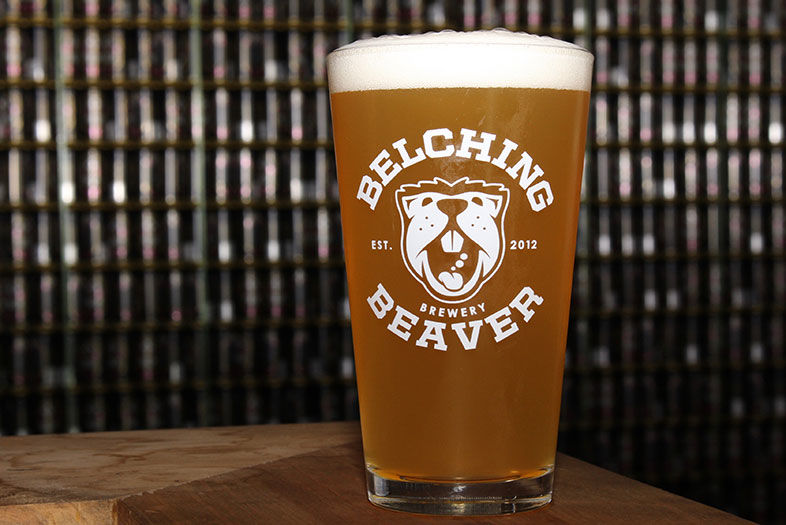
Have a Beer with the Belching Beaver Brew Team
Phantom Bride IPA is currently the brewery’s best-selling non-stout. | Photo: Bruce Glassman
And where did Phantom Bride come from?
Thomas: I did that at the tavern and then we scaled it up.
And the double Mosaic IPA?
Troy: That’s me. You know, I enjoy being here [in the main production facility], but it’s fun to be creative. I mean, ask any brewer what the dream is and I don’t think you’ll hear them say it’s being a production brewer. But it’s really fun being here and watching it grow. I can tell how fast my tanks are turning. We just got three more bright tanks in here and we’ll have two more fermenters in like four more weeks or something.
What’s the beer that’s filling up the tanks the most right now?
Troy: Phantom Bride IPA and our peanut butter stout are the two big ones right now and they’re our best sellers.
Do you guys have a beer that’s your favorite to brew? Or the most fun to brew?
Troy: Not stout!
Peter: Anything without bittering hops!
Thomas: Whatever’s the easiest thing to brew! With the least amount of shit you have to haul up the stairs! Let me put it in perspective: You have to haul about 1,200 pounds of shit up to the brew deck to make stout.
Troy: Right. All the lactose and all the rolled oats. And that’s literally up and down, up and down. It’s taxing on you. My favorite thing to brew here would probably be the Me So Honey. It’s only 8 buckets of honey up to the top deck of the brew house and you can lauter that beer in no time.
So simplicity is the beauty, then? And that makes it the most satisfying?
Peter: Well, Phantom is great to brew because I only have to deal with a bag-and-a-half of sugar on my system, which is nothing. And there’s no oats in it so you can just lauter it super-fast. It’s the fastest brew day. But sours are a lot easier and don’t have to be on point as much—they’re pretty easy as long as you don’t mess up the mash.
Troy: Right now, we’re doing a lot of one-offs at Pub 980. We’ve done a lot of hazy beers—everyone wants these juicy, hazy IPAs. If you come in here at the Oceanside tasting room, or at 980, if you look around it looks like everyone’s drinking hefeweizens. But no, it’s the IPAS!
You guys currently have five locations in San Diego. That’s kind of interesting from a business model standpoint and also considering the unique brewery landscape in town these days. There are a lot of breweries that I think are trying to figure out how to survive with 150 other breweries to compete with. A lot of the smaller guys have traditionally shied away from the model where you’re distributing a lot of your own beer to different satellite locations and building your brand in different communities that way. Why do you think that model has worked so well for Belching Beaver?
Troy: The primary reason that we jumped to North Park, which was our first satellite tasting room, was because we didn’t really have a lot of business going on in San Diego at that time. So we kind of looked at it as, you put a cold box down there, you serve some beer and have kegs available, and it was all part of the self-distribution we were doing for the entire county. If a brewery starts in North County, say, you’re going to get a little more of a North County crowd. Not a lot of people in North Park want to drive 45 minutes to visit a brewery in Vista. Now, we got a little bit of pushback in North Park, where there’s a little bit more of a “clique-ish” community, but it was still the best strategy for us to open a tasting room there and to spread the word about Belching Beaver to South County. We hoped that people there would embrace us and like our beer and would support us, and they did.
And you feel that North Park really helped you build the brand?
Troy: Oh, it totally did.
And those same people who came to the tasting room and liked the beer would then go to the grocery store and buy it there.
Troy: Exactly. It was a marketing hub where you could go taste the product. You can’t lick a billboard, but you can sure taste a beer!
Alright, I can’t finish an interview with the guys from Belching Beaver without talking about the name.
Troy: Damn! We were so close!
Obviously, the name is something most people tend to feel strongly about one way or the other. What’s been your experience with that and what do you say to folks who won’t try the beer because of the name or say they don’t like the brewery because of the name?
Troy: We get less and less of that on a regular basis. When we opened up in Vista, we virtually never heard anything about it. Most people thought it was like cool, clever, funny, whatever. And then we’d get one or two people who said, “You guys are sick.” The name was really nothing more than the fact that we had someone who was going to be a partner in the company at one point—a big marketing guy—and he had the logo and the name already. So it was kind of for lack of anything else. We didn’t come out of the gate saying we wanted to be completely different, we didn’t want to piss people off, and, had we known, maybe things would be a little different. But there’s no going back now.
Thomas: I just think there’s a small subset of people who have too much time on their hands. And if you’re worrying about a beer name, then—well, there’s always going to be those people and they’re probably never going to be our customers.
Peter: It’s mostly south of the 56 that I’ve had people who have issues with our name. Very rarely is there any issue when I go on the road—I’d say 99% of people love our name. And once in a while, for the people who say they won’t try the beer because of the name, once they try it, they like it.
Thomas: Our mission statement as a company is that we want to be very accessible to everybody. There’s a part of the beer culture that’s starting to be really exclusive and they want the most rare thing and it’s like, “If you don’t know this thing or that thing about beer then don’t set foot in our space.” There is that vibe and we’re kind of the counter to that.
Troy: We want to be approachable. If you ask me what beer is about, I would say it’s about hanging out with friends, drinking a beer, and having a good time. I mean, there’s always a time to swirl your beer in a cup, but that’s really not the direction that we went with our company. We want to be approachable. We want to have fun. And we want to make great beer for people. And so, we’re gonna keep on doing what we’re doing!
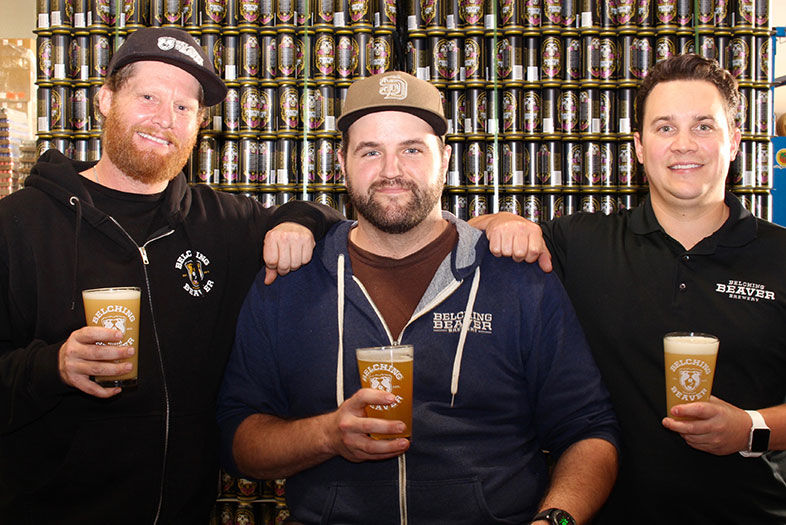
Have a Beer with the Belching Beaver Brew Team
Barrel Master Peter Perrecone, Head Brewer Thomas Peters, and Brewmaster Troy Smith | Photo: Bruce Glassman
